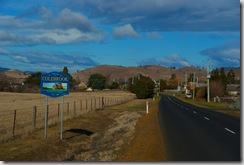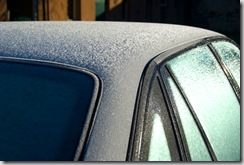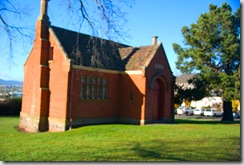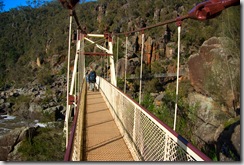The lengths you go to make a call
I’m looking back at what I’ve written so far I have realised that I’ve never really explained the ancestors I’m here to look for. Maybe it’s that natural hesitancy to whisper when you admit any connection to Tasmania or just simple forgetfulness on my part but here’s a quick rundown.
In 1833 my GGGGGrandfather, Abraham Biggs, his wife and 5 children arrived in Hobart Town from England. Abraham was a carpenter and established a business in town. He then decided to go into farming, something he failed at, before coming back to Hobart and eventually going into the kit home business. One of his sons tried his luck in the new goldfields of Victoria but noticed that houses couldn’t be built fast enough for the influx so he ended up as the Victorian agent of the family business, selling kit homes as fast as he could land them on the wharf from Tasmania. The family went on to spread itself out in Tasmania and Victoria with my Grandmother being born in Launceston. When she was really young she moved to New Zealand and I was lucky enough to be born on the better side of the ditch.
Another of Abraham’s sons is also of interest. My GGGGranduncle, Alfred Biggs had a pretty full life that included being a teacher, bank clerk and amateur scientist. He made the first long distance phone call in Tasmania (and likely the southern hemisphere) using handsets he built himself. He was one of the founding fathers of seismology in Australia and was a keen amateur astronomer. He assisted in the observance of the transit of Venus in 1874 and was popularly known as the Astronomer Royal of Launceston. It was a memorial to his observatory that I was searching out when I first arrived in Launceston.
So, now that the background history is sketched out, on with the story.
I’d seen Hobart as it is now and tried to picture it as it must have been in 1833 and it was now time to move back the way I’d driven but forwards in the story. I knew that Abraham had tried his hand at farming because he was a keen letter writer, as I suppose many were in those days. The advantage of Abraham is that his letters have survived and I have copies of them. Starting with one before he leaves England and continuing on to 1853, the detail is amazing, entertaining and informative of the times. 
In 1836 Abraham moved to a small village called Jerusalem, something that must have pleased him as a devoutly religious man. It is still a small village and it’s necessary to turn off the highway to get to. Now called Colebrook it is somewhere that you could pass through without noticing. I was really only there to get a feel for the place and to walk in my ancestors footsteps but I spent a pleasant few hours talking with Allan, a volunteer in the Colebrook History Room.
The History Room is a small single roomed building that stands alone in a park and is crammed with displays and artefacts attempting to tell the story of Colebrook. Despite the protestations of some locals the Room is there and Allan is justifiably proud of its existence. Allan struck me as a man who is not attempting to escape from society so much as happy to observe it from a small distance. Having moved to Tasmania from the Sunshine Coast only a few years he has been working at the History room as a volunteer and trying to win the trust and confidence of the locals as he battles to gather the rapidly disappearing resource of local memories. I left with the promise that I would send him copies of Abrahams letters which paint a vivid picture of life there in 1836.
While I was there I also got to meet the Hon. Dick Adams, the local federal MP for the region, who dropped in to shake hands and meet and greet. I was impressed with his knowledge of the area, even in the short time that we talked. Dick would not have looked out of place in 1836 with his generous girth, waistcoat and bristling beard.
On Allan’s recommendation I drove on to Oatlands and visited the History Room there. This one really felt like a second hand store. It was in an old service station and was crammed with so many artefacts that it was hard to sort through them and get any coherent idea of the towns history. I had coffee in a coffee shop that boasted an open fire and then walked up and down the main street admiring the substantial collection of sandstone buildings that have all managed to survive from the early 1800’s. It may be a little off the main highway but well worth a look.
I was now leaving the trail of Abraham, after failing at farming he moved back to Hobart and went back in carpentry, and now picked up Alfred’s story.
A little further along the highway is Campbell Town, the place I had stopped at on my trip down and where I had raved about the roast beef and yorkshire pudding. Alfred had moved with his family 1871and took the position of teacher at the local school. It was here that he made friends with the local doctor who seems to have ignited his passion in science. In his time at Campbell Town he assisted a group of American scientists who had been sent to Tasmania to observe the transit of Venus. In thanks the Americans left Alfred many of their instruments. His interests were wide ranging though because, when he heard of Bell’s success with the telephone he decided to build his own. Once he had his two handsets he sent one to Launceston and used the telegraph wires to “make a call”. The phones are now in the Queen Victoria Museum in Launceston although they no longer seem to be on display. I’ll be trying to make some enquiries in the morning to see if I can get a photo. 
Unfortunately I arrived in Campbell Town too late and the museum and information centre was closed so I over-nighted and was up early this morning to walk around town.
It was a clear blue sky and the frost had left so much ice on my car that it sparkled when the light hit it.
Campbell Town is not big and it wasn’t difficult to find St Luke’s school, the building still standing on the side of the road.
From there I found “The Grange”, once the doctors residence and still a private residence. I stood staring at the impressive building that wouldn’t look at all out of place in an Agatha Christie novel and imagined Alfred sitting in the doctors study, in front of a fire and possibly with a port in his hand while the two men discussed the latest scientific marvels and discoveries of the day. 
In front of the Grange is a park that was the site where the Venus transit was observed.
By now the museum was open and I walked in with high expectations that there would be an entire display devoted to my GGGGrand-uncle. There wasn’t.
The lady in there was a volunteer and new to the area so she didn’t actually know Alfred and was quite impressed when I said that his name appeared in a few places around the town in connection with it’s historic past. She was even more impressed when I pointed out the book for sale which was his biography. I bought a copy of the book so that I would have my own, I’ve been using a battered copy of my Mothers and it, along with Abrahams letters, have been my guides to this trip.
I walked back to my car, past a butcher selling mutton birds, and continued on up the highway to Launceston.
My intention was to find Alfred’s telephones in the museum but I made a small detour to the Cataracts where I had a nerve wracking walk over a suspension bridge and then a wonderful Devonshire tea. Just as a side note, which goes on the scone first, the jam or the cream?
On to the museum I found that it has moved and the original building is being renovated. the new one is on the former site of a railway yard and while the displays of trains is good there doesn’t seem to be any displays relating to any other part of Tasmanian or Launceston history so I couldn’t find the phones. The Community History Centre part of the museum was closed by the time I got there but I intend to be back at opening time tomorrow to see if anyone can help me to get a photo of these elusive handsets.
